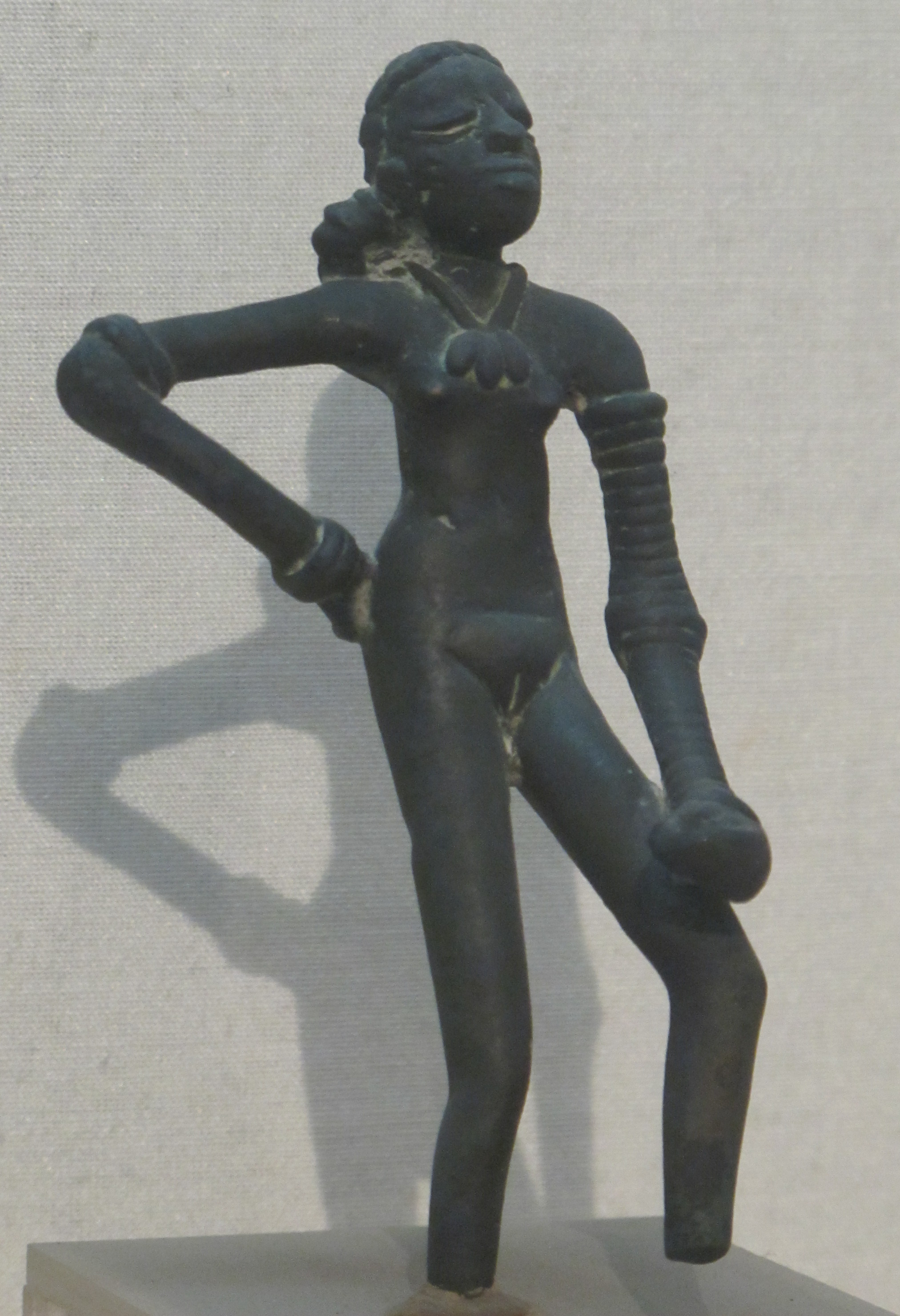|
Kāṭhaka
The ''Yajurveda'' (, , from यजुस्, "worship", and वेद, "knowledge") is the Veda primarily of prose mantras for worship rituals.Michael Witzel (2003), "Vedas and Upaniṣads", in ''The Blackwell Companion to Hinduism'' (Editor: Gavin Flood), Blackwell, , pages 76–77 An ancient Vedic Sanskrit text, it is a compilation of ritual-offering formulas that were said by a priest while an individual performed ritual actions such as those before the yajna fire. Yajurveda is one of the four Vedas, and one of the scriptures of Hinduism. The exact century of Yajurveda's composition is unknown, and estimated by Witzel to be between 1200 and 800 BCE, contemporaneous with Samaveda and Atharvaveda. The Yajurveda is broadly grouped into two – the "black" or "dark" (''Krishna'') Yajurveda and the "white" or "bright" (''Shukla'') Yajurveda. The term "black" implies "the un-arranged, unclear, motley collection" of verses in Yajurveda, in contrast to the "white" which implies t ... [...More Info...] [...Related Items...] OR: [Wikipedia] [Google] [Baidu] |
Katha Upanishad
The ''Katha Upanishad'' (, ), is an ancient Hindu text and one of the '' mukhya'' (primary) Upanishads, embedded in the last eight short sections of the ' school of the Krishna Yajurveda.Paul Deussen. ''Sixty Upanishads of the Veda''. Volume 1, Motilal Banarsidass. . pages 269-273 It is also known as ' Upanishad, and is listed as number 3 in the Muktika canon of 108 Upanishads. The Katha Upanishad consists of two chapters (''Adhyāyas''), each divided into three sections (''Vallis''). The first ''Adhyaya'' is considered to be of older origin than the second. The Upanishad has the legendary story of a little boy, Nachiketa – the son of Sage Vajasravasa, who meets Yama (the king of the dead). Their conversation evolves to a discussion of the nature of man, knowledge, Atman (Self) and moksha (liberation). The chronology of Katha Upanishad is unclear and contested, but it is generally considered to belong to the later Upanishads, dated to the 5th to first centuries BCE. The ... [...More Info...] [...Related Items...] OR: [Wikipedia] [Google] [Baidu] |
Historical Vedic Religion
The historical Vedic religion, also called Vedism or Brahmanism, and sometimes ancient Hinduism or Vedic Hinduism, constituted the religious ideas and practices prevalent amongst some of the Indo-Aryan peoples of the northwest Indian subcontinent (Punjab and the western Ganges plain) during the Vedic period ( 1500–500 BCE). These ideas and practices are found in the Vedic texts, and some Vedic rituals are still practised today. The Vedic religion is one of the major traditions which Origins of Hinduism, shaped modern Hinduism, though present-day Hinduism is significantly different from the historical Vedic religion. The Vedic religion has roots in the Indo-Iranians, Indo-Iranian culture and religion of the Sintashta culture, Sintashta ( 2200–1750 BCE) and Andronovo culture, Andronovo ( 2000–1150 BCE) cultures of Eurasian Steppe. This Indo-Iranian religion borrowed "distinctive religious beliefs and practices" from the non-Indo-Aryan Bactria–Margiana Archaeological Compl ... [...More Info...] [...Related Items...] OR: [Wikipedia] [Google] [Baidu] |
Hindu Philosophy
Hindu philosophy or Vedic philosophy is the set of philosophical systems that developed in tandem with the first Hinduism, Hindu religious traditions during the Iron Age in India, iron and Classical India, classical ages of India. In Indian philosophy, of which Hindu philosophy is a prominent subset, the word used for philosophy is ''Darshana'' (Sanskrit: दर्शन; meaning: "viewpoint or perspective"), from the Sanskrit root 'दृश' () meaning 'to see, to experience'. The schools of thought or ''Darshanas'' within Hindu philosophy largely equate to the six ancient orthodox schools: the ''Āstika and nāstika, āstika'' (Sanskrit: आस्तिक) schools, defined by their acceptance of the Vedas, the oldest collection of Sanskrit literature, Sanskrit texts, as an authoritative source of knowledge. Of these six, Samkhya (सांख्य) is the earliest school of Dualism (Indian philosophy), dualism; Yoga (philosophy), Yoga (योग) combines the metaphysics ... [...More Info...] [...Related Items...] OR: [Wikipedia] [Google] [Baidu] |
Iron Age India
In the prehistory of the Indian subcontinent, the Iron Age succeeded Bronze Age India and partly corresponds with the megalithic cultures of South India. Other Iron Age archaeological cultures of north India were the Painted Grey Ware culture (1300–300 BCE) and the Northern Black Polished Ware (700–200 BCE). This corresponds to the transition of the Janapadas or principalities of the Vedic period to the sixteen Mahajanapadas or region-states of the early historic period, culminating in the emergence of the Maurya Empire towards the end of the period. The earliest evidence of iron smelting predates the emergence of the Iron Age proper by several centuries. Region Northern India R. Tewari (2003) radiocarbon dated iron artefacts in Uttar Pradesh, including furnaces, tuyeres, and slag between c. 1000 BCE to 1800 BCE. Antiquity of iron in India was pushed back from following the excavations at Malhar, Raja Nala ka Tila, Dadupur and Lauhradewa in Uttar Pradesh from 199 ... [...More Info...] [...Related Items...] OR: [Wikipedia] [Google] [Baidu] |
Music Of India
Owing to India's vastness and diversity, Indian music encompasses numerous genres in multiple varieties and forms which include classical music, folk, rock, and pop. It has a history spanning several millennia and developed over several geo-locations spanning the sub-continent. Music in India began as an integral part of socio-religious life. History Pre-history Paleolithic The 30,000-year-old paleolithic and neolithic cave paintings at the UNESCO world heritage site at Bhimbetka rock shelters in Madhya Pradesh show a type of dance. Mesolithic and chalcolithic cave art of Bhimbetka illustrates musical instruments such as Gongs, Bowed Lyre, daf etc. Neolithic Chalcolithic era (4000 BCE onward) narrow bar shaped polished stone celts like music instruments, one of the earlier musical instrument in India, were excavated at Sankarjang in the Angul district of Odisha. There is historical evidence in the form of sculptural evidence, i.e. musical instruments, singing ... [...More Info...] [...Related Items...] OR: [Wikipedia] [Google] [Baidu] |
Khilani
The Khilani (Sanskrit: खिलानि, Khilāni) are a collection of 98 " apocryphal" hymns of the Rigveda, recorded in the ', but not in the ' shakha. They are late additions to the text of the Rigveda, but still belong to the "Mantra" period of Vedic Sanskrit, contemporary with the Atharvaveda The Atharvaveda or Atharva Veda (, , from ''wikt:अथर्वन्, अथर्वन्'', "priest" and ''wikt:वेद, वेद'', "knowledge") or is the "knowledge storehouse of ''wikt:अथर्वन्, atharvans'', the proced ..., Yajurveda, and Samaveda, estimated to fall within the range of c. 1200–1000 BCE. The Khilāni hymns include the '' Śrī Sūkta'', as well as the ''Kuntāpa'' hymns for the ''Mahāvrata'' ceremony, the New Year's festival of the early Kuru Kingdom.Witzel, Michael"The Development of the Vedic Canon and its Schools : The Social and Political Milieu,"in Witzel, Michael (ed.) (1997), ''Inside the Texts, Beyond the Texts. New Approaches t ... [...More Info...] [...Related Items...] OR: [Wikipedia] [Google] [Baidu] |
Tibet
Tibet (; ''Böd''; ), or Greater Tibet, is a region in the western part of East Asia, covering much of the Tibetan Plateau and spanning about . It is the homeland of the Tibetan people. Also resident on the plateau are other ethnic groups such as Mongols, Monpa people, Monpa, Tamang people, Tamang, Qiang people, Qiang, Sherpa people, Sherpa, Lhoba people, Lhoba, and since the 20th century Han Chinese and Hui people, Hui. Tibet is the highest region on Earth, with an average elevation of . Located in the Himalayas, the highest elevation in Tibet is Mount Everest, Earth's highest mountain, rising above sea level. The Tibetan Empire emerged in the 7th century. At its height in the 9th century, the Tibetan Empire extended far beyond the Tibetan Plateau, from the Tarim Basin and Pamirs in the west, to Yunnan and Bengal in the southeast. It then divided into a variety of territories. The bulk of western and central Tibet (Ü-Tsang) was often at least nominally unified under a ser ... [...More Info...] [...Related Items...] OR: [Wikipedia] [Google] [Baidu] |
Nepal
Nepal, officially the Federal Democratic Republic of Nepal, is a landlocked country in South Asia. It is mainly situated in the Himalayas, but also includes parts of the Indo-Gangetic Plain. It borders the Tibet Autonomous Region of China China–Nepal border, to the north, and India India–Nepal border, to the south, east, and west, while it is narrowly separated from Bangladesh by the Siliguri Corridor, and from Bhutan by the States and union territories of India, Indian state of Sikkim. Nepal has a Geography of Nepal, diverse geography, including Terai, fertile plains, subalpine forested hills, and eight of the world's ten List of highest mountains#List, tallest mountains, including Mount Everest, the highest point on Earth. Kathmandu is the nation's capital and List of cities in Nepal, its largest city. Nepal is a multi-ethnic, multi-lingual, multi-religious, and multi-cultural state, with Nepali language, Nepali as the official language. The name "Nepal" is first record ... [...More Info...] [...Related Items...] OR: [Wikipedia] [Google] [Baidu] |
Oxford University Press
Oxford University Press (OUP) is the publishing house of the University of Oxford. It is the largest university press in the world. Its first book was printed in Oxford in 1478, with the Press officially granted the legal right to print books by decree in 1586. It is the second-oldest university press after Cambridge University Press, which was founded in 1534. It is a department of the University of Oxford. It is governed by a group of 15 academics, the Delegates of the Press, appointed by the Vice Chancellor, vice-chancellor of the University of Oxford. The Delegates of the Press are led by the Secretary to the Delegates, who serves as OUP's chief executive and as its major representative on other university bodies. Oxford University Press has had a similar governance structure since the 17th century. The press is located on Walton Street, Oxford, Walton Street, Oxford, opposite Somerville College, Oxford, Somerville College, in the inner suburb of Jericho, Oxford, Jericho. ... [...More Info...] [...Related Items...] OR: [Wikipedia] [Google] [Baidu] |
Maitri Upanishad
The ''Maitrayaniya Upanishad'' (, ) is an ancient Sanskrit text that is embedded inside the Yajurveda.Paul Deussen, Sixty Upanishads of the Veda, Volume 1, Motilal Banarsidass, , pages 327-386 It is also known as the ''Maitri Upanishad'' (, ), and is listed as number 24 in the Muktika canon of 108 Upanishads. The ''Maitrayaniya Upanishad'' is associated with the ''Maitrayanas'' school of the Yajurveda. It is a part of the "black" Yajurveda, with the term "black" implying "the un-arranged, motley collection" of content in Yajurveda, in contrast to the "white" (well arranged) Yajurveda where Brihadaranyaka Upanishad and Isha Upanishad are embedded.Paul Deussen, Sixty Upanishads of the Veda, Volume 1, Motilal Banarsidass, , pages 217-219 The chronology of Maitrayaniya Upanishad is contested, but generally accepted to be a late period Upanishadic composition.Stephen Phillips (2009), Yoga, Karma, and Rebirth: A Brief History and Philosophy, Columbia University Press, , Chapter 1 ... [...More Info...] [...Related Items...] OR: [Wikipedia] [Google] [Baidu] |
Shvetashvatara Upanishad
The ''Shvetashvatara Upanishad'' (, ) is an ancient Sanskrit text embedded in the Yajurveda. It is listed as number 14 in the Muktika canon of 108 Upanishads. The Upanishad contains 113 mantras or verses in six chapters.Robert Hume (1921)Shvetashvatara Upanishad The Thirteen Principal Upanishads, Oxford University Press, pages 394–411 with footnotes The Upanishad is one of the 33 Upanishads from Taittiriyas, and associated with the ''Shvetashvatara'' tradition within ''Karakas sakha'' of the Yajurveda. It is a part of the "black" "krishna" Yajurveda, with the term "black" implying "the un-arranged, motley collection" of content in Yajurveda, in contrast to the "white" (well arranged) Yajurveda where Brihadaranyaka Upanishad and Isha Upanishad are embedded. The chronology of Shvetashvatara Upanishad is contested, but it is generally accepted to be a late-period Upanishadic composition.Stephen Phillips (2009), Yoga, Karma, and Rebirth: A Brief History and Philosophy, Columbia ... [...More Info...] [...Related Items...] OR: [Wikipedia] [Google] [Baidu] |






